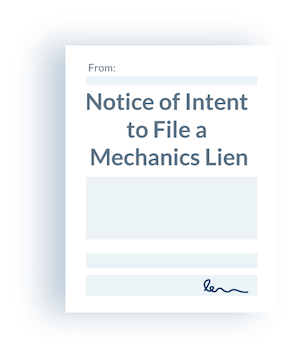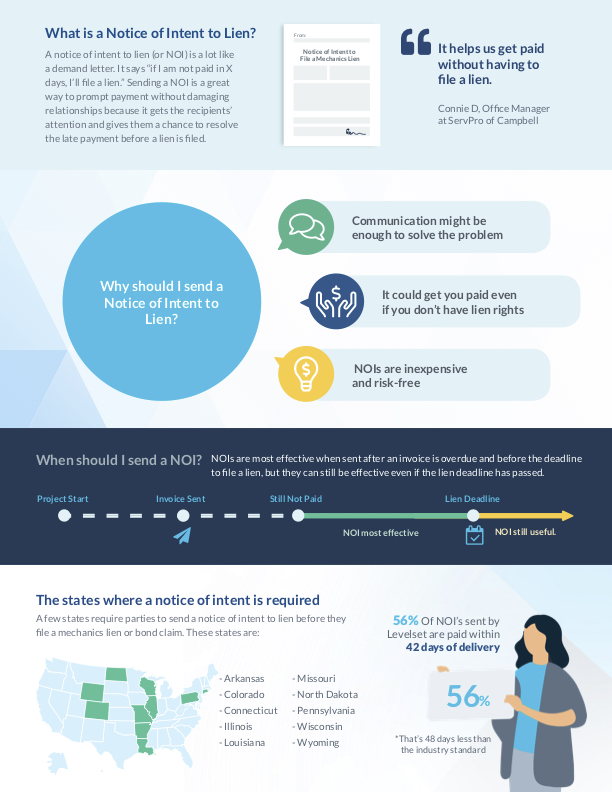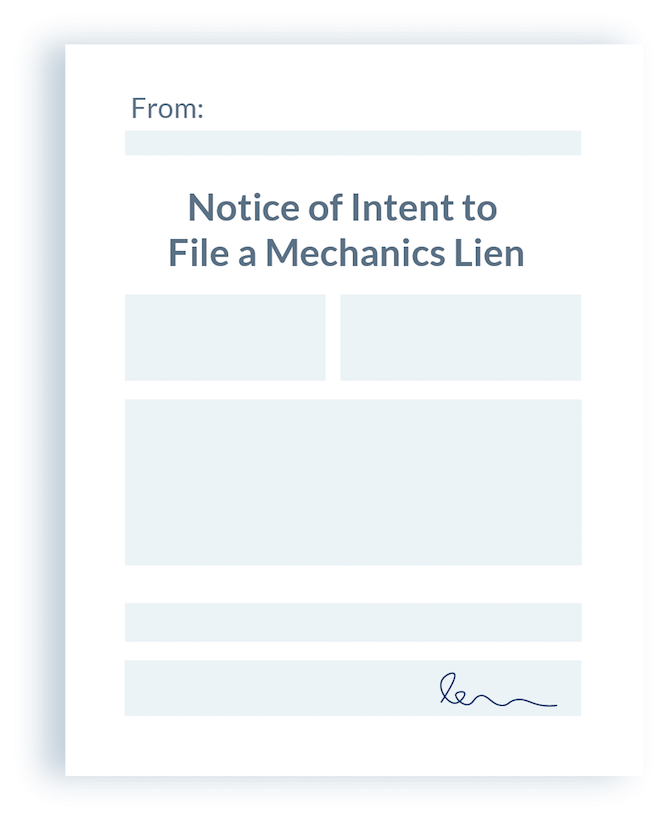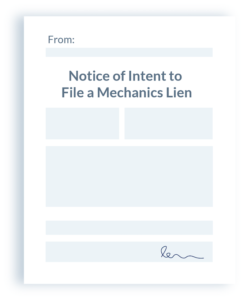Getting paid in the construction industry can be a form of art. There are so many challenges confronting trade contractors and suppliers when trying to get paid, not the least of which involve pay-when-paid clauses, change order disagreements, and workmanship disputes. We touched on this subject a few months ago in the post “Why Customers Don’t Pay And What To Do When It Happens.”
Clearly, the most effective weapon at getting paid in the construction industry is to protect your right to file a lien by sending visibility documents (like a preliminary notice, or even a within the state deadlines—and enforce those rights when necessary. However, an often overlooked tool is the Notice of Intent, also called “Notice of Intent to Lien,” or NOI.
The NOI is simply a demand for payment that threatens to file a mechanics lien if payment is not immediately made. While this notice is only technically required by ten states, it can be sent voluntarily in any state, and is highly effective at getting paid.
In fact, according to data from Notices of Intent sent by Levelset, 56% of the debts were paid within 42 days of delivery of the NOI—48 days shorter than the industry standard.
That 56% figure is an astonishingly high figure considering that companies usually turn to this remedy as a close-to-last-resort (so, these are tough debts) and the cost of sending the notice is so low.

Send a Notice of Intent to Lien for Free
We’re the Notice of Intent experts. With us it’s fast, easy, and done right. And it's free.
Send NowInspired by this data, we put together an infographic analyzing the challenges faced by construction credit professionals when trying to get paid, the options available to those companies in getting paid, and where the Notice of Intent remedy may fit in.

If you can’t view the infographic, here’s the text:
What is a Notice of Intent to Lien?
A notice of intent to lien (or NOI) is a lot like a demand letter. It says “if I am not paid in X days, I’ll file a lien.” Sending a NOI is a great way to prompt payment without damaging relationships because it gets the recipient’s attention and gives them a chance to resolve the late payment before a lien is filed.
“It helps us get paid without having to file a lien.”
Connie D.
Office Manager at ServPro of Campbell
Why should I send a Notice of Intent to Lien?
- Communication might be enough to solve the problem
- It could get you paid even if you don’t have lien rights
- NOIs are inexpensive and risk-free
When should I send an NOI?
NOIs are most effective when sent after an invoice is overdue and before the deadline to file a lien, but they can still be effective even if the lien deadline has passed. (View state-specific requirements and deadlines by choosing your state on the Construction Payment Resources page.)
The states where a Notice of Intent is required
A few states require parties to send a notice of intent to lien before they file a mechanics lien or bond claim. These states are:
How effective is an NOI?
56% Of NOIs sent by Levelset are paid within 42 days of delivery.
56% Of NOIs sent by Levelset are paid within 42 days of delivery. That’s 48 days less than the industry average.


